SUMMARY HIGHLIGHTS
- Some of the most popular places you can visit in the Chubu region with the Takayama-Hokuriku Pass include Kanazawa, Hida Takayama, and Shirakawa-go.
- I saved roughly JPY 8,190 on transportation using the pass.
I was watching a candlemaker at work when my guide told me that I was standing in Japan’s oldest candle shop.
The man quietly shaping a candle by hand was the 7th-generation owner of Mishima, a candle shop in Hida Furakawa that’s been in business for over 240 years. The set of candles I bought that morning remains one of my most prized mementos from Japan.
The day before, I was in Takaoka, a city in Toyama prefecture known for its metal-casting industry. I tried my hand at tin-casting and created a crude but passable pair of chopstick rests.
I walked among animatronic dinosaurs in Fukui, the least visited prefecture, before revisiting Shirakawa-go, Hida Takayama, and Kanazawa, three of the most beautiful and sought-after destinations in central Japan.
All the places I mentioned above can be found in the western half of the Chubu region, and you can visit them all on the same trip using the Takayama-Hokuriku Area Tourist Pass.
VISIT CHUBU QUICK LINKS
You can purchase the pass using the links below. I’ve also included links to interesting tours and other travel-related services to help you make the most of your time in the Chubu region.
TAKAYAMA-HOKURIKU PASS
You can purchase the Takayama-Hokuriku Pass through trusted partner websites like Klook, but getting it online from JR West has its benefits. I’ll explain why in the FAQs section of this guide.
EXPERIENCES
- Kanazawa: Tea Ceremony at a Historic Tearoom
- Nagoya: Private Toyota Commemorative Museum Tour
- Takayama: Sake-Tasting Tour at Six Breweries
- Gifu: Forge Your Own Samurai Knife
- Fukui: Maruoka Castle Admission Ticket
OTHER SERVICES
GUIDE TABLE OF CONTENTS
WHAT IS THE TAKAYAMA-HOKURIKU AREA TOURIST PASS?
The Takayama Hokuriku Pass is a rail pass that allows foreign tourists (on temporary visitor status) unlimited travel in the western part of the Chubu region for five (5) consecutive days. It’s designed to promote tourism to the Hokuriku region, a sub-region of Chubu, and its surrounding areas.
Pass holders can travel by JR train between multiple cities in western Chubu like Nagoya, Hida Takayama, Toyama, Kanazawa, and Fukui. The pass connects the Hokuriku region to Kyoto, Osaka, and Kansai International Airport (KIX), and gives bus access to the UNESCO World Heritage Sites of Shirakawa-go and Gokayama.
The pass costs JPY 19,800 (May 2025) and can be purchased at multiple JR stations in covered areas, including KIX and Nagoya’s Chubu Centrair Airport. The pass can also be purchased online on JR West or through partner websites like Klook. It’s a physical ticket, not a digital pass, so you’ll need to pick it up at a JR station if you purchase it online.
The following map* shows the areas covered by the Takayama Hokuriku Pass. Pass holders can travel along these routes as often as they want within the validity period of their pass. Jump to the FAQs section of this guide for more information on the Takayama-Hokuriku Area Tourist Pass.
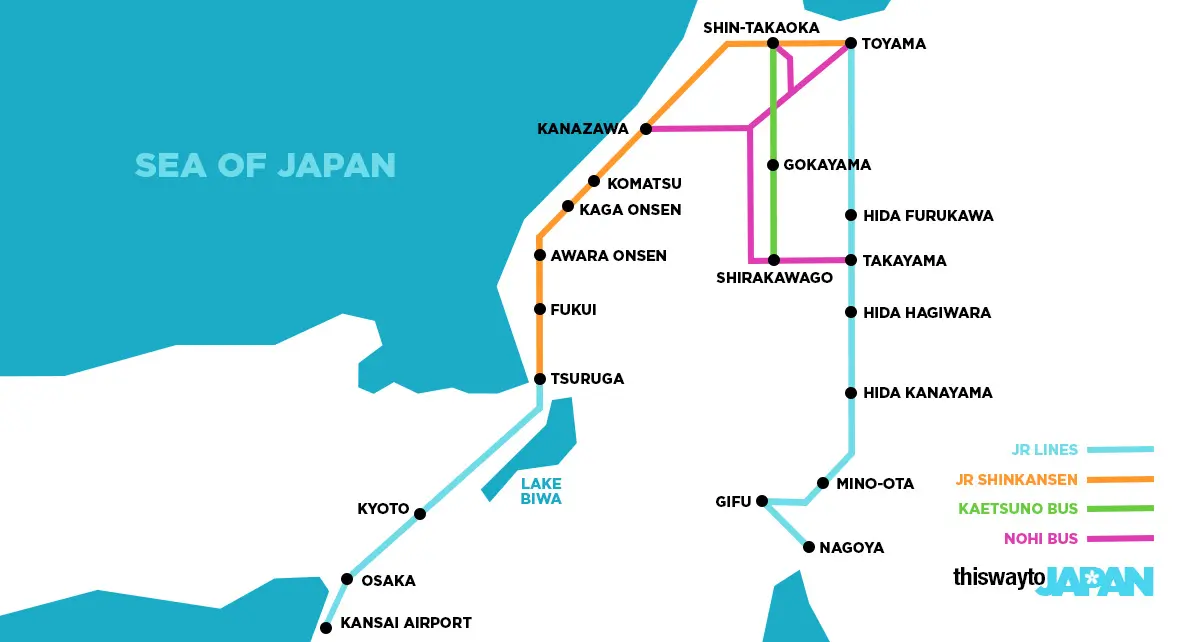
*Please note that the map above is a simplified version to help you visualize available routes. The pass is also valid on JR conventional lines in Osaka. You can visit the Tourist Pass website for a map showing all available routes.
PLACES TO VISIT WITH THE TAKAYAMA-HOKURIKU PASS
This isn’t an exhaustive list but featured below are some of the top destinations you can visit using a Takayama-Hokuriku Area Tourist Pass.
Osaka
Osaka is a part of the Kansai region, not Chubu, but it’s covered by the pass presumably to allow easy access to the Hokuriku region from KIX. Personally, I arrived in Japan via KIX and claimed my pass at Kansai Airport Station. I then used it to travel by train to Awara Onsen in Fukui prefecture.
You can use the pass to explore Osaka City but I suggest leaving that for another trip. The pass needs to be used within five consecutive days so it’s best to focus on western Chubu to maximixe its value.
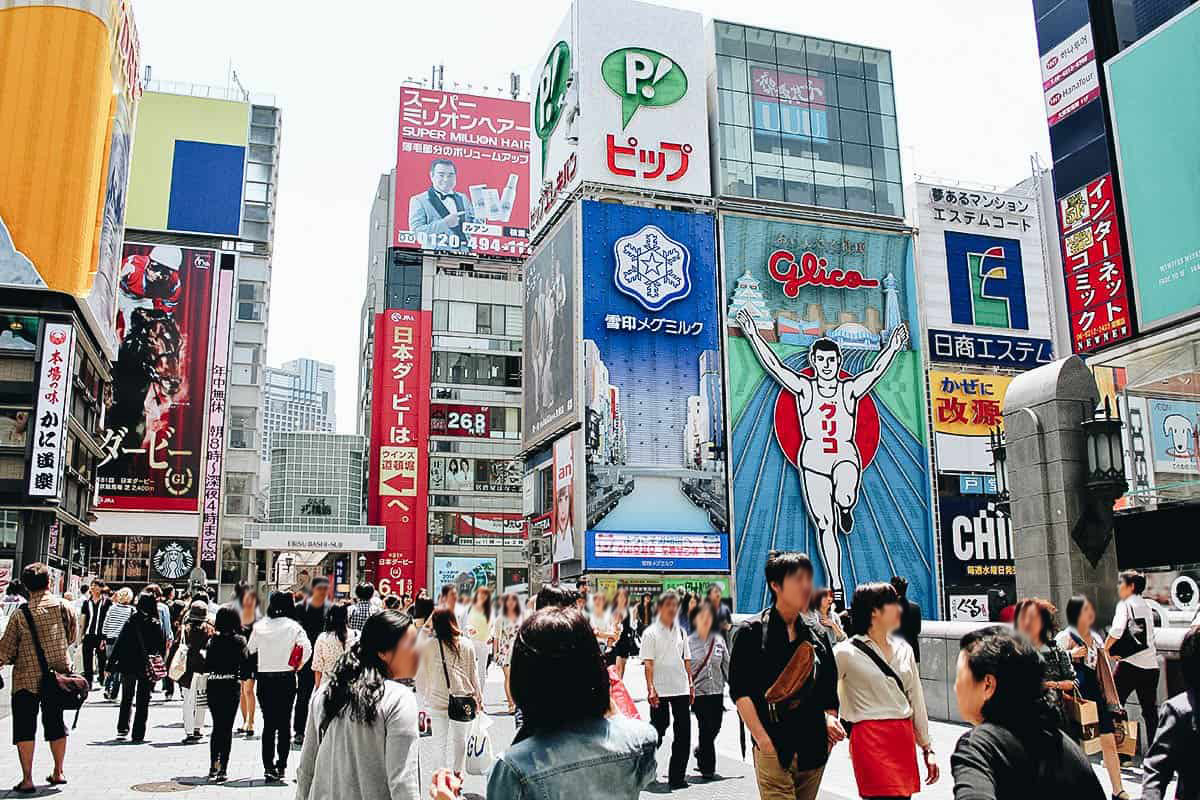
Kyoto
The pass covers travel to Kyoto Station but like Osaka, it’s best to leave that for another trip. There are better rail passes you can use to explore Kyoto and the Kansai region like the JR West Kansai Area Pass or the Kansai Railway Pass.
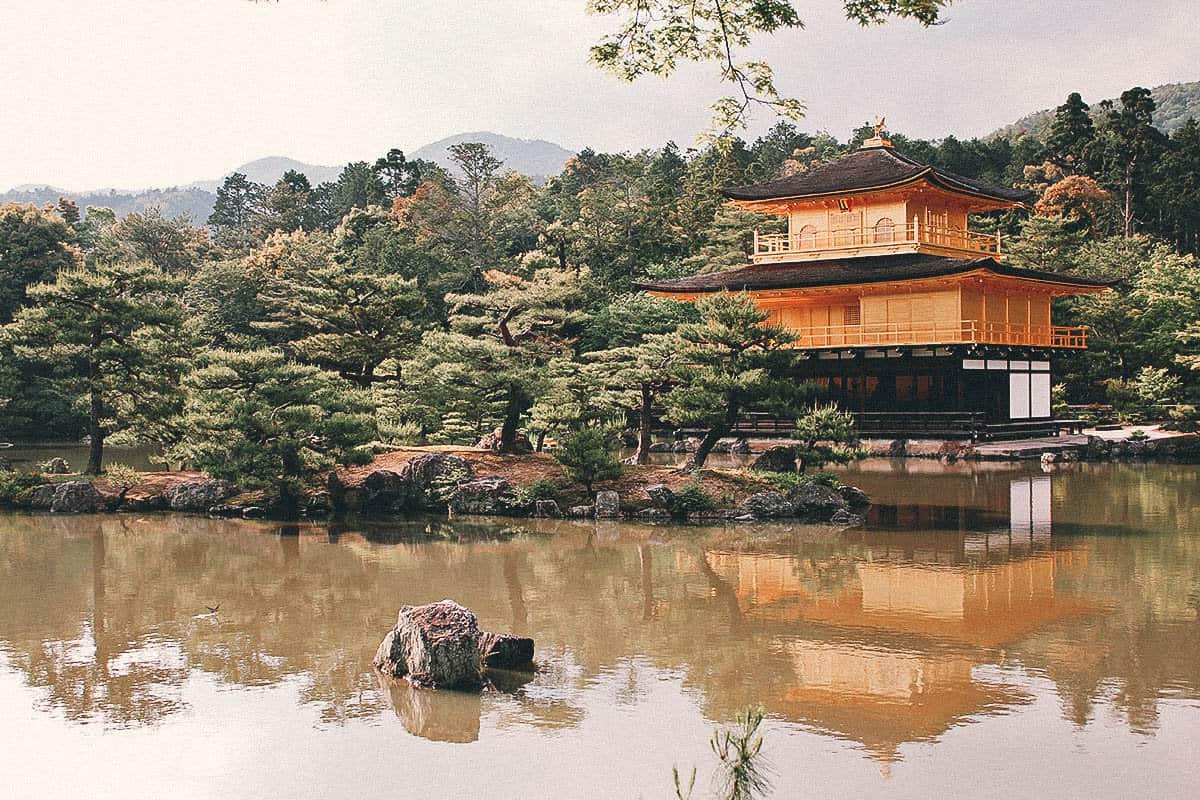
Nagoya
Nagoya was the last city I visited with my Takayama Hokuriku Pass. I used the pass to travel to Nagoya on the fifth and final day of its validity, before flying out of Japan from Chubu Centrair International Airport the following morning.
Nagoya is the capital of Aichi prefecture and the largest city in the Chubu region. It’s home to a few interesting attractions like the Toyota Commemorative Museum of Industry and Technology, SCMAGLEV and Railway Park, and the Nagoya City Science Museum. The Toyota Motor Corporation maintains its headquarters just outside of Nagoya, which is why you’ll find a few Toyota-related attractions here.
I visited the Toyota Techno Museum and was surprised to learn that the Toyota company started off as an automatic loom manufacturer known as Toyoda. It’s a fascinating museum that’s worth visiting even if you aren’t particularly interested in cars.
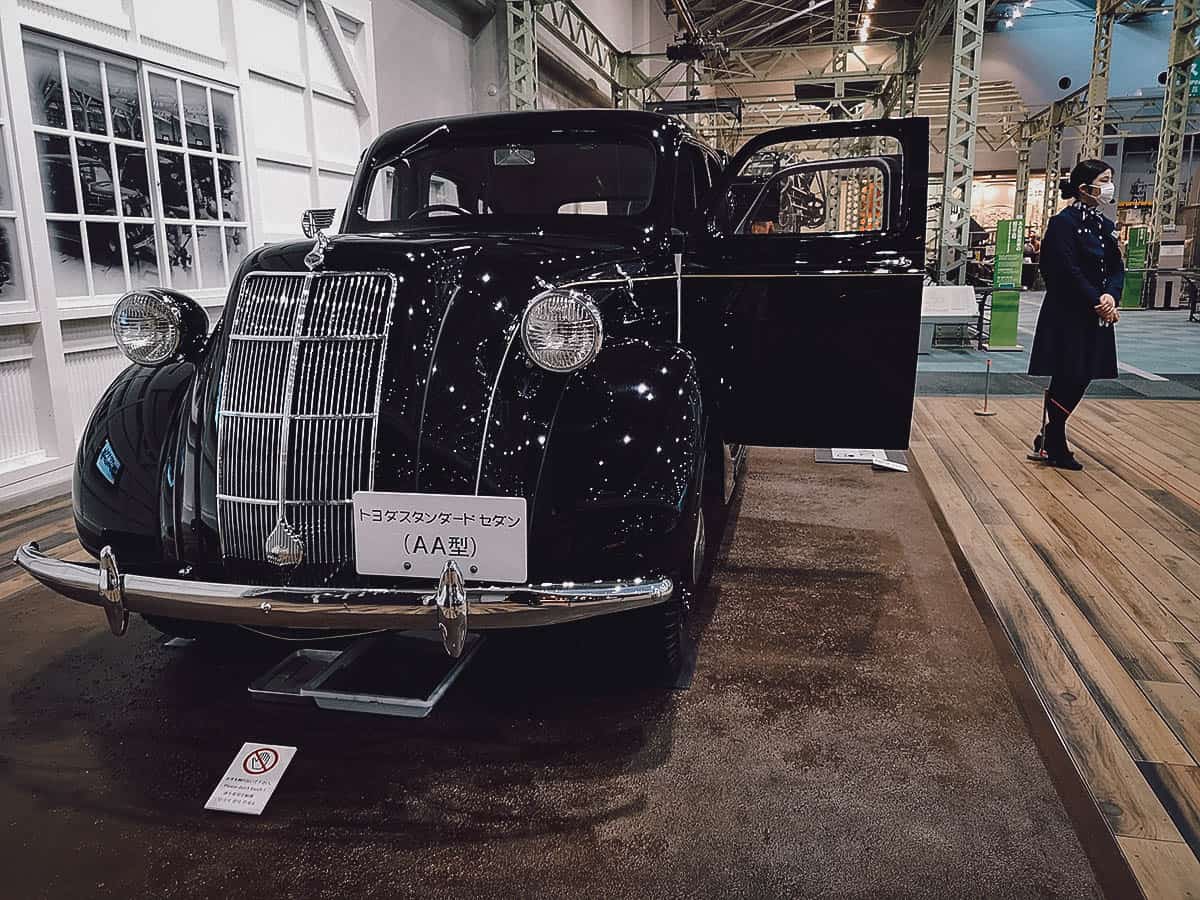
Kanazawa
Kanazawa is the capital of Ishikawa prefecture. Known for its many cultural and historical attractions, you can think of it as a more compact and less crowded version of Kyoto. Like Hida Takayama, it’s a great place to visit if you’re interested in the more traditional side of Japan.
Kanazawa is famous for its old castle town, samurai district, and geisha entertainment districts. It has a few interesting museums as well, though its most famous attraction is undoubtedly Kenrokuen, one of Japan’s three best landscaped gardens and considered by many to be the most beautiful overall.
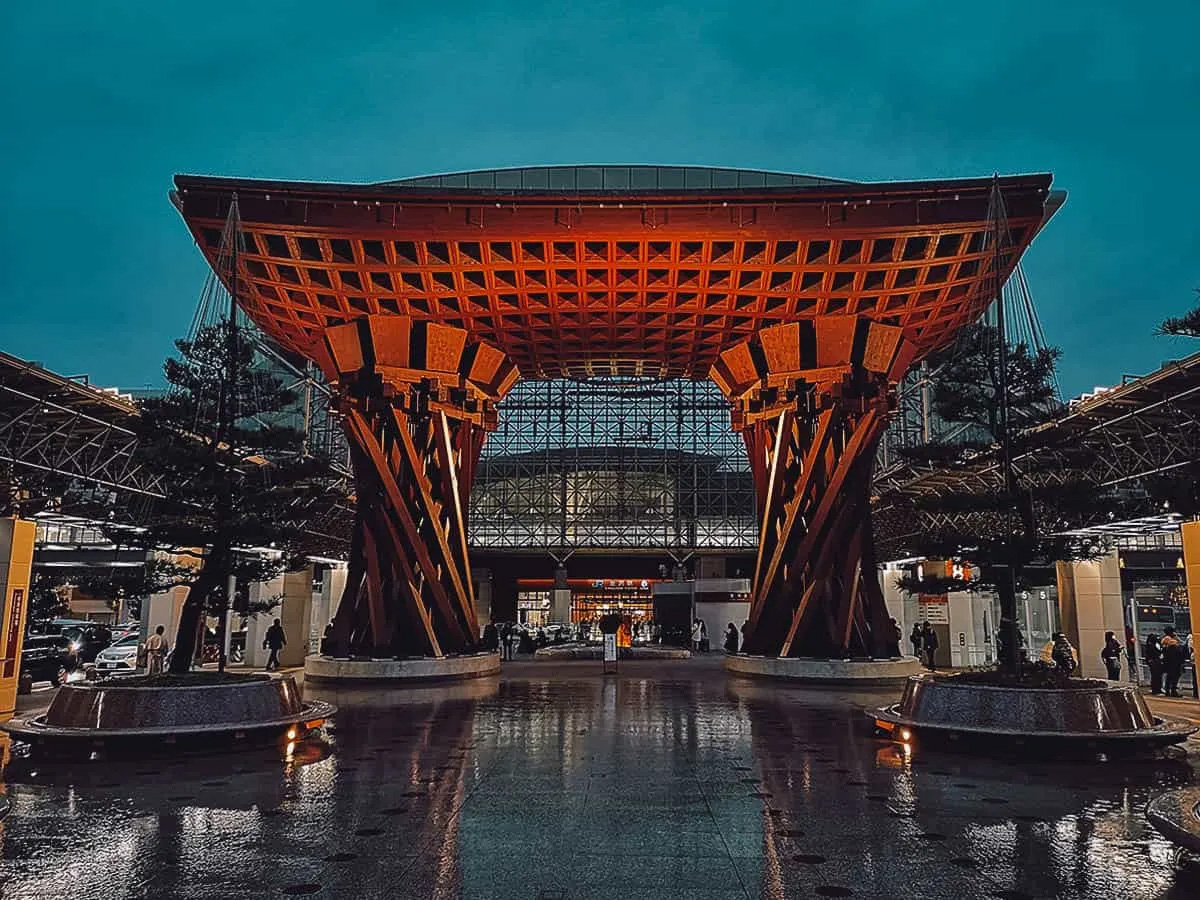
Hida Takayama
Hida Takayama (or simply Takayama) is a lovely atmospheric town famous for its traditional wooden houses and laid back rural vibe. It’s home to the Takayama Festival (Takayama Matsuri), which is considered by many to be one of the three most beautiful festivals in Japan.
If you’re planning on visiting Shirakawa-go, then Hida Takayama is one of the most convenient cities to use as a base. The bus ride to Shirakawa-go is less than an hour from here.
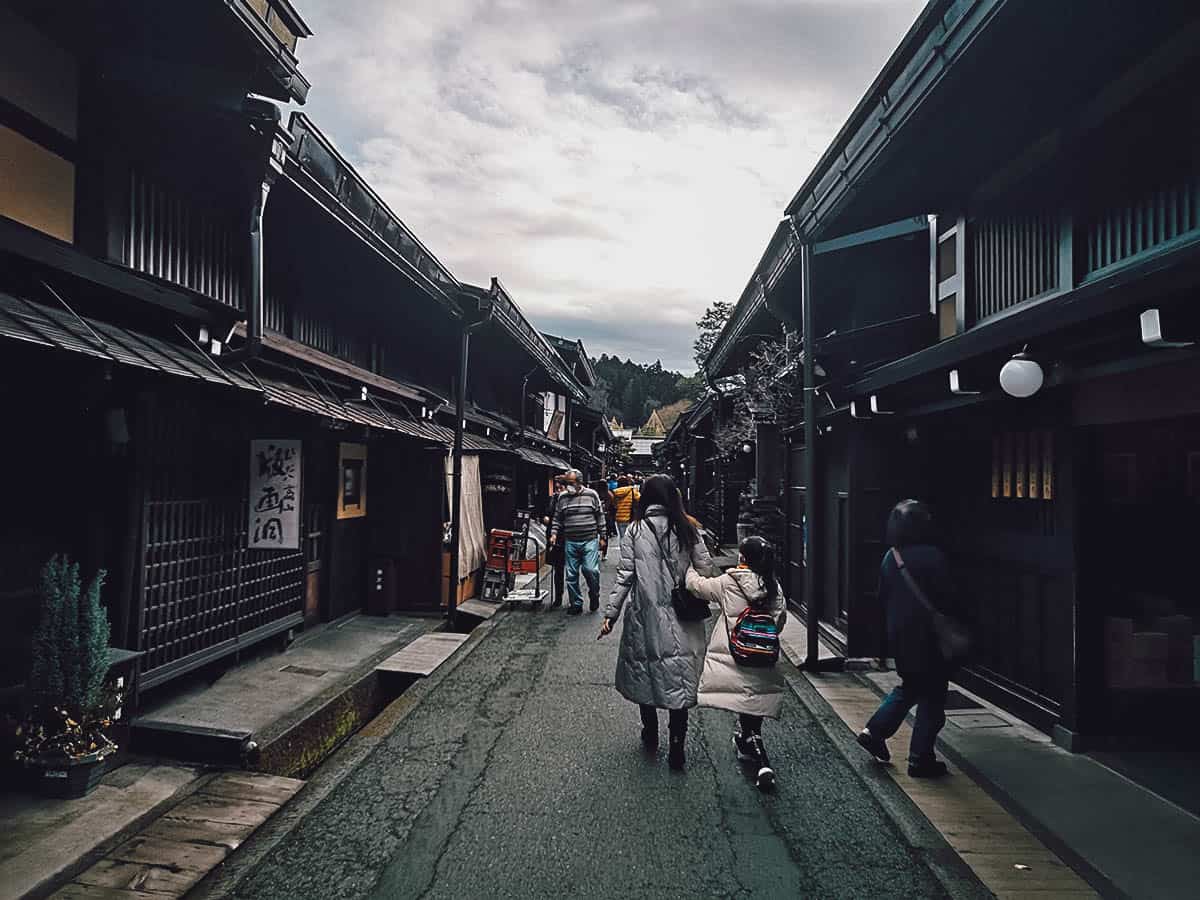
Shirakawa-go
Thanks to social media, this UNESCO World Heritage Site has exploded in popularity in recent years. It features traditional gassho-zukuri farmhouses known for their steep thatched roofs designed to withstand large amounts of heavy snow.
Ogimachi, the main village in Shirakawa-go, is beautiful at any time of the year but it looks especially breathtaking when covered in a thick blanket of fresh snow. If you’re visiting the Chubu region in winter and have never been to Shirakawa-go, then making a stop here is a must.
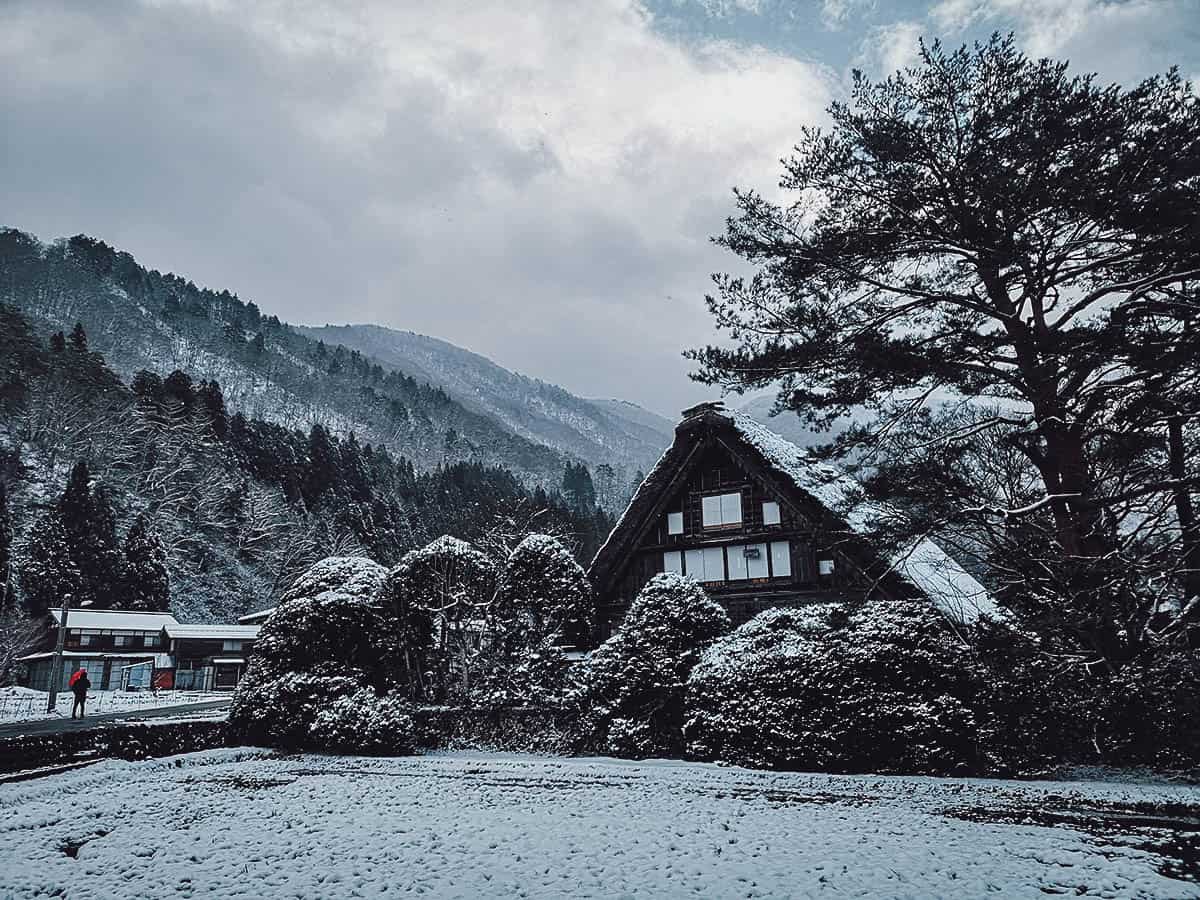
Gokayama
Like Shirakawa-go, Gokayama is a UNESCO World Heritage Site. It’s a little harder to get to but it’s more intimate and less crowded than its more famous neighbor.
You can use your Takayama Hokuriku Pass to visit both Gokayama and Shirakawa-go by Kaetsuno Bus. Like Shirakawa-go, the term Gokayama refers to a region, with the most beautiful villages in the region being Suganuma and Ainokura. Buses will stop at both.
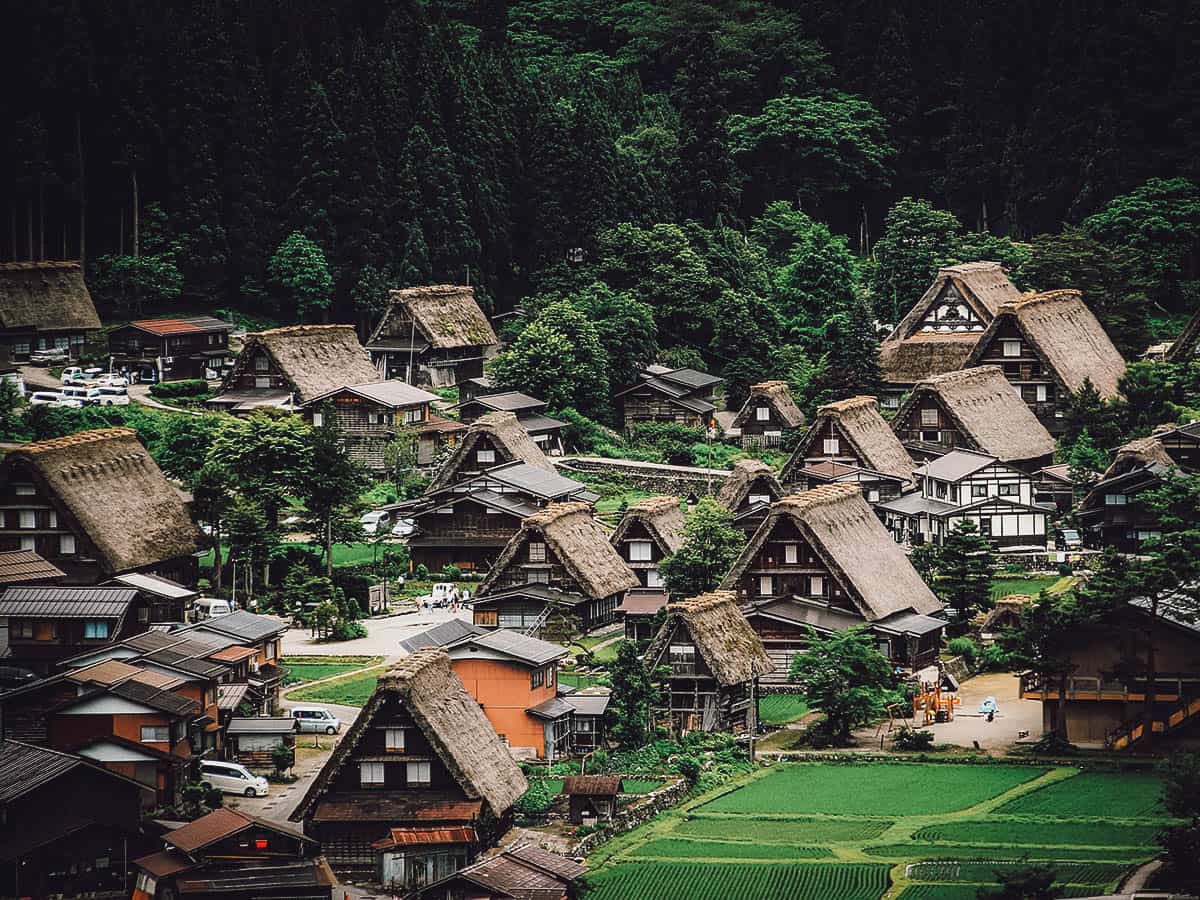
Photo by Aranami via Shutterstock
Fukui
Fukui is one of the least known prefectures in Japan, at least to foreign visitors. I spent the night in the hot spring town of Awara Onsen and visited a couple of Fukui’s most famous attractions, including the magnificent Tojinbo cliffs. I had seen pictures of cliffs with columnar joints in Iceland but I had no idea you could find similar geological features in Japan!
Along with the cliffs of Tojinbo, the Fukui Prefectural Dinosaur Museum is the most famous attraction in Fukui. Open since 2000, it’s one of the leading dinosaur museums in the world and features over forty skeletons and several life-sized animatronic dinosaurs.
It’s interesting to note that fossils from unique dinosaur species were excavated and first identified in Fukui, like Fukuiraptor, Fukuisaurus, and Fukuititan.
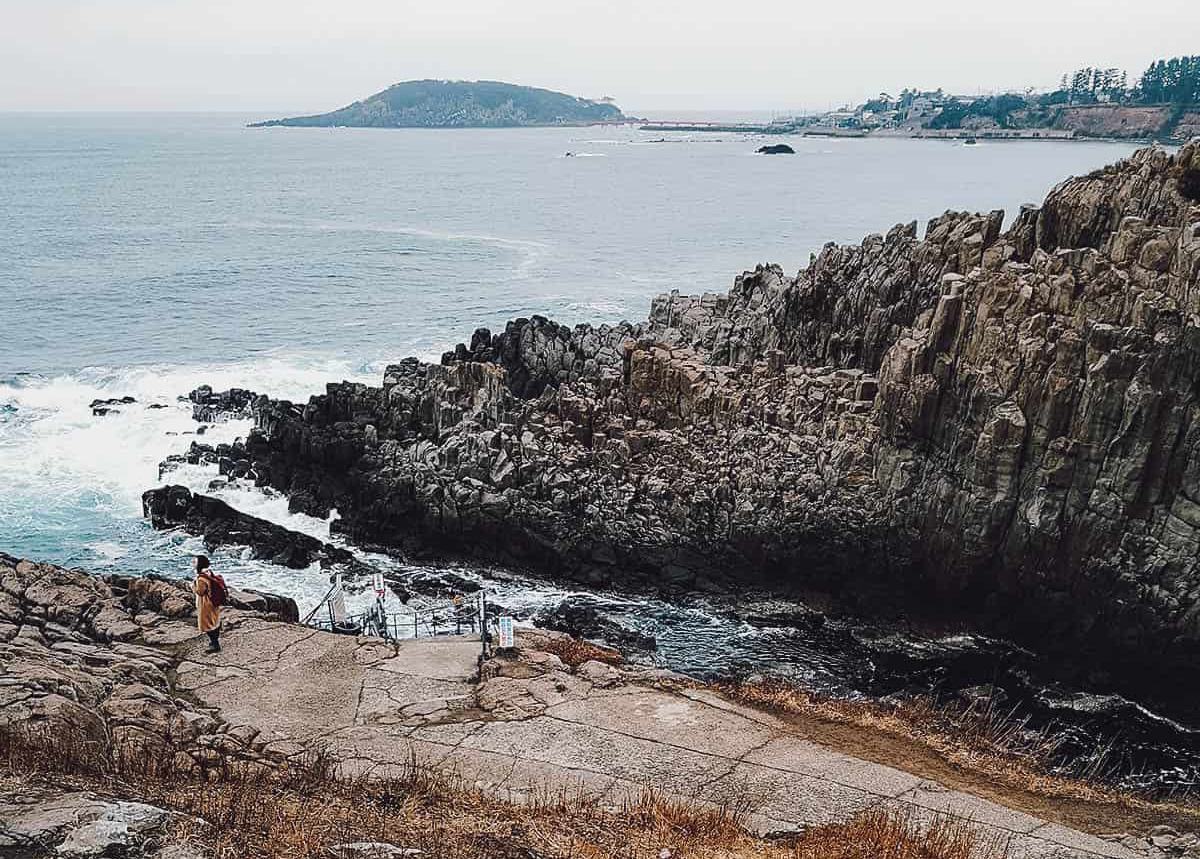
Hida Furukawa
If you like traditional Japan, then you’re going to love Hida Furukawa. Similar in feel to Hida Takayama, it’s known for its traditional Japanese wooden houses and curious koi-filled canals. Like Takayama, a famous festival is held here every year (Furukawa Matsuri).
Fans of the hit anime film Kimi no Na wa will be excited to learn that a few of the scenes in the movie were based on actual locations in Hida Furukawa.
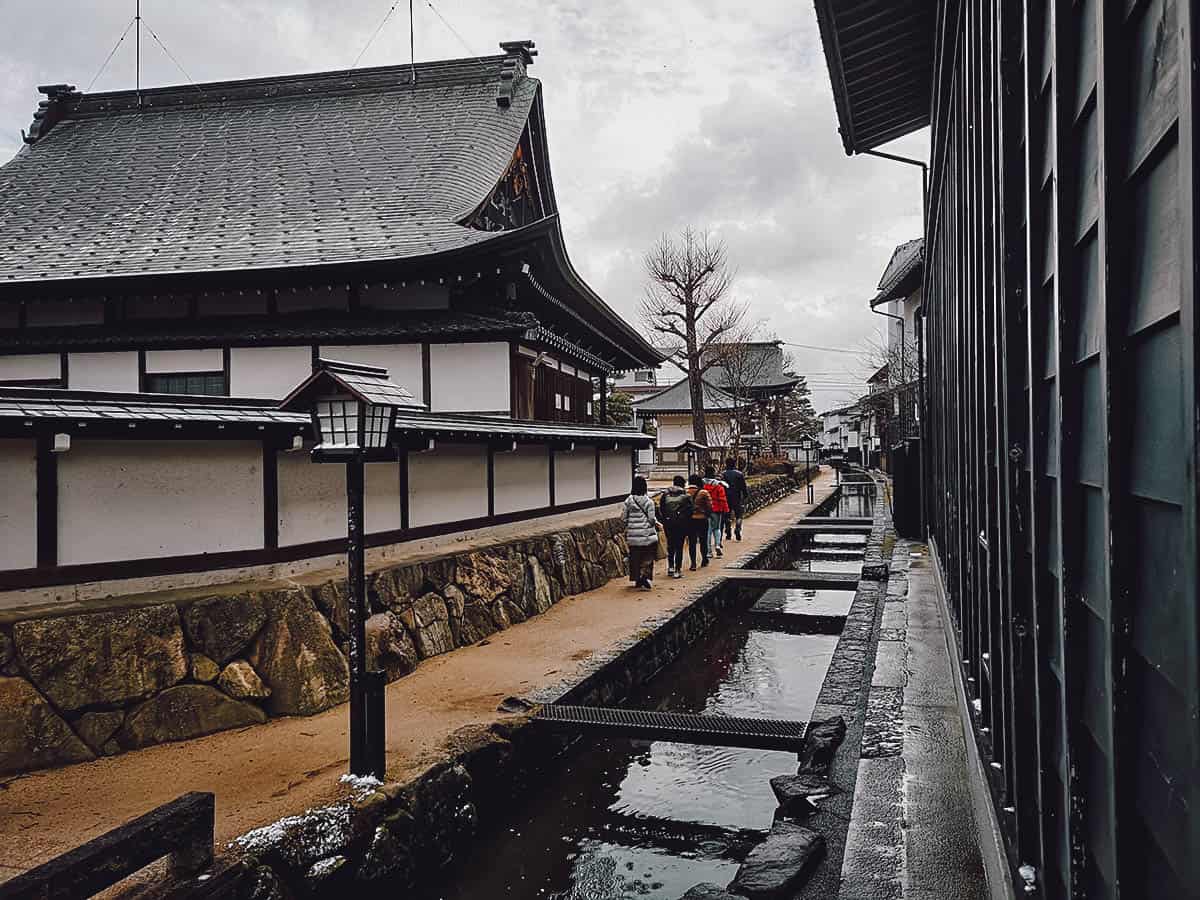
Takaoka
Takaoka is a city in Toyama prefecture. It’s historically known for its metal casting, an industry that still thrives to this day. I made a brief stop here to try my hand at tin casting. Pictured below are the chopstick rests I made, right before the polishing phase.
If you’re planning on visiting Gokayama, then Takaoka is an ideal place to start. You can use your Takayama Hokuriku Pass to catch a Kaetsuno Bus to Ainokura and/or Suganuma from Takaoka Station or Shin-Takaoka Station.
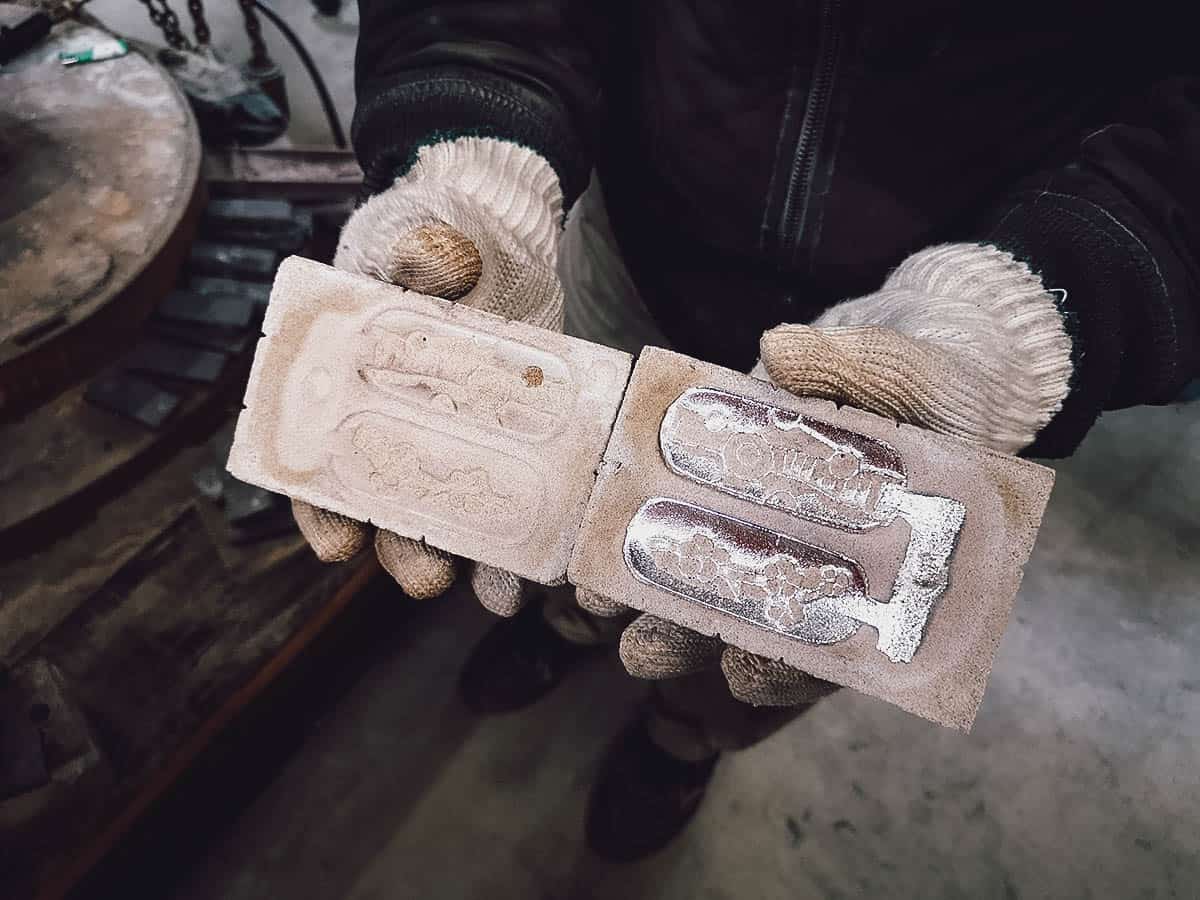
Toyama
Toyama City is the capital of Toyama Prefecture. I didn’t spend much time here but it’s described as a former castle town that’s historically been a center for medicine in Japan. It’s also a popular jumping off point for the Tateyama Kurobe Alpine Route.
After arriving by Shinkansen at Toyama Station, I walked to Fugan Canal Kansui Park and had coffee at what thetravel.com calls the most beautiful Starbucks in the world. I read that this is also a great place to enjoy the cherry blossoms in spring.
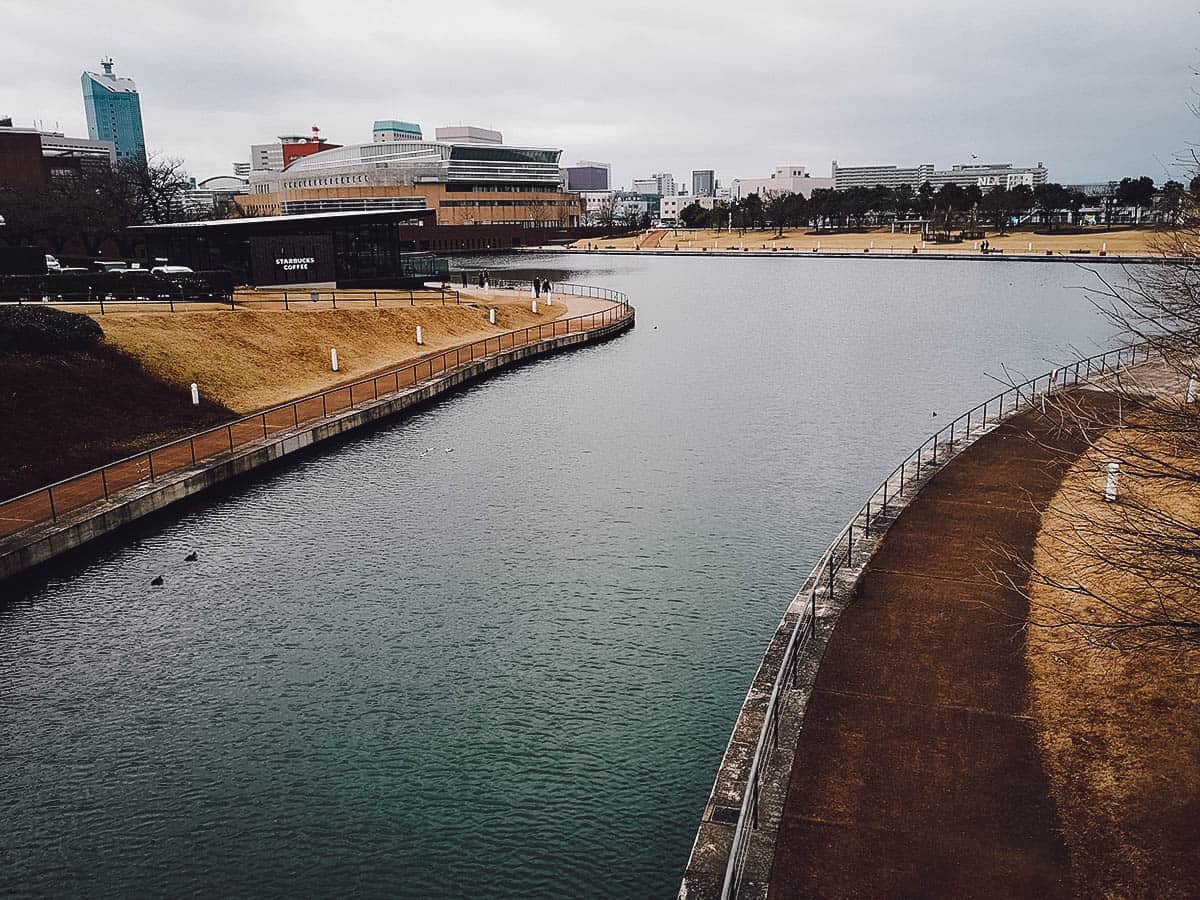
TAKAYAMA-HOKURIKU PASS FAQs
How much is the Takayama-Hokuriku Area Tourist Pass and where can I buy it?
As of May 2025, the Takayama Hokuriku Pass costs JPY 19,800. It’s available at JR stations in covered areas, including Osaka’s Kansai International Airport and Nagoya’s Chubu Centrair Airport.
The pass is also available online from JR West or through partner websites like Klook. You can also purchase it from travel agents outside Japan.
If you purchase the pass through JR West, then you’ll have the added benefit of making seat reservations on trains through their website. Otherwise, you’ll need to reserve seats at JR ticketing offices or through ticket machines.
Please note that the Takayama-Hokuriku Pass is a physical ticket, not a digital pass, so if you purchase it online, then you’ll need to pick up the physical ticket at a JR station first before you can use it for travel.
How long is it valid for?
The Takayama Hokuriku Pass is valid for five (5) consecutive days. The validity period is based on calendar days, not 24-hour periods. So even if you started using it at 11PM on January 1st, January 1st will still count as your first full day.
Is the pass transferrable?
No, it isn’t. It can only be used by one person. The pass holder must carry his/her passport at all times for verification.
How do I use the pass?
The Takayama Hokuriku Area Tourist Pass isn’t a digital ticket. It’s a physical ticket about the size of a credit card. You’ll need to insert it into a station gate each time you use it. The ticket will come out from the exit slot so be sure to claim it before going through the gate!
Do I need to reserve seats?
TRAINS
It isn’t required for trains, but you can if you want to. JR trains have cars with reserved seats and cars with non-reserved seats.* Seat reservations are highly recommended during peak travel seasons but personally, I like to make reservations whenever I can to always guarantee myself a seat.
With a Takayama Hokuriku Pass, you can make up to six (6) train seat reservations for free.
*While the vast majority of trains in Japan have cars with non-reserved seating, a small number of trains operate with fully reserved cars only. If you don’t plan on booking a seat in advance, then it’s important to confirm that the train you intend to take offers non-reserved seats.
BUSES
Buses are more confusing. Most bus routes require reservations but a few don’t so I’ve listed the information in bulletpoints below to (hopefully) make it a little easier to digest.
- Regular Kaetsuno buses between Takaoka and Shirakawa-go DON’T require reservations.**
- All buses between Kanazawa and Shirakawa-go, and between Toyama and Shirakawa-go, DO require reservations.
- Most buses between Takayama and Shirakawa-go require reservations but a few don’t. You can refer to the Nohi Bus website for information on reserved and non-reserved buses along this route.
**The Nohi website lists a couple of Kaetsuno bus routes between Takayama and Takaoka, with stops at Shirakawa-go, that require reservations. These aren’t listed in the Kaetsuno website timetable so these may be special routes. If you’re interested in these routes, then please contact Kaetsuno for more information.
How do I make seat reservations?
TRAINS
You can reserve seats at ticket vending machines or through JR station ticketing offices. You’ll need to do this before boarding. If you don’t need a reserved seat, then just show them your Takayama Hokuriku Pass and proceed to a non-reserved car.
You can also reserve seats online but you’ll need to purchase your Takayama-Hokuriku Pass through JR West. You can make reservations through their website after purchasing the pass. Like the Takayama-Hokuriku Pass itself, you’ll need to pick up the physical tickets for the seat reservations at a JR station.
Seat reservations can be made up to one (1) month in advance.
BUSES
You can make reservations at the bus station or in advance by phone. Reservation policies vary by company so please visit their respective websites for more information.
If you’re traveling during peak season, then it’s highly recommended to book bus seats in advance.
Where can I get more information?
If you need more information about the Takayama-Hokuriku Tourist Area Pass, then you can visit the Tourist Pass website.
IS THE TAKAYAMA-HOKURIKU PASS WORTH IT?
Like any rail pass in Japan, it depends on how often you use it. If you use it sparingly, then it may not be worth the investment. But if you use it everyday during its validity period, then it can potentially save you a lot of money.
Here’s a sample itinerary based on the route I took when I used the Takayama-Hokuriku Pass a few years ago:
DAY 1: KIX-Fukui
DAY 2: Fukui-Kanazawa
DAY 3: Kanazawa-Toyama-Takaoka
DAY 4: Takaoka-Shirakawago-Hida Takayama
DAY 5: Hida Takayama-Hida Furukawa-Nagoya
Using Google Maps, the estimated total cost for the route above is JPY 27,990 (June 2025). At just JPY 19,800, you’ll save roughly JPY 8,190 with the Takayama-Hokuriku Pass.
Disclosure
Some of the links in this article on the Takayama-Hokuriku Pass are affiliate links, meaning we’ll get a small commission if you make a purchase at no added cost to you. We only recommend products and services that we use ourselves and firmly believe in. We really appreciate your support as this helps us make more of these free travel guides. Arigato gozaimasu!

